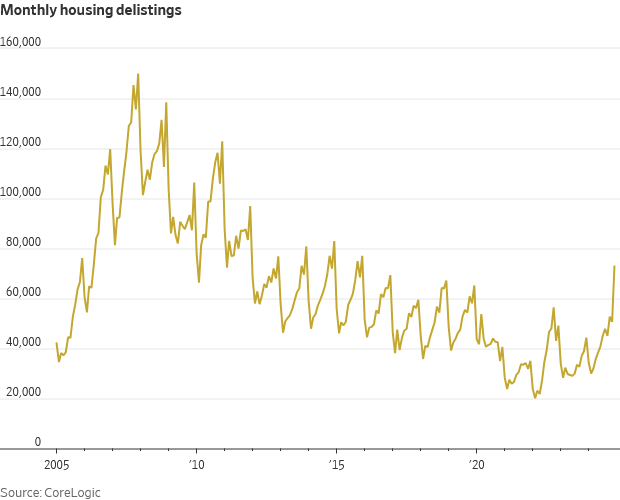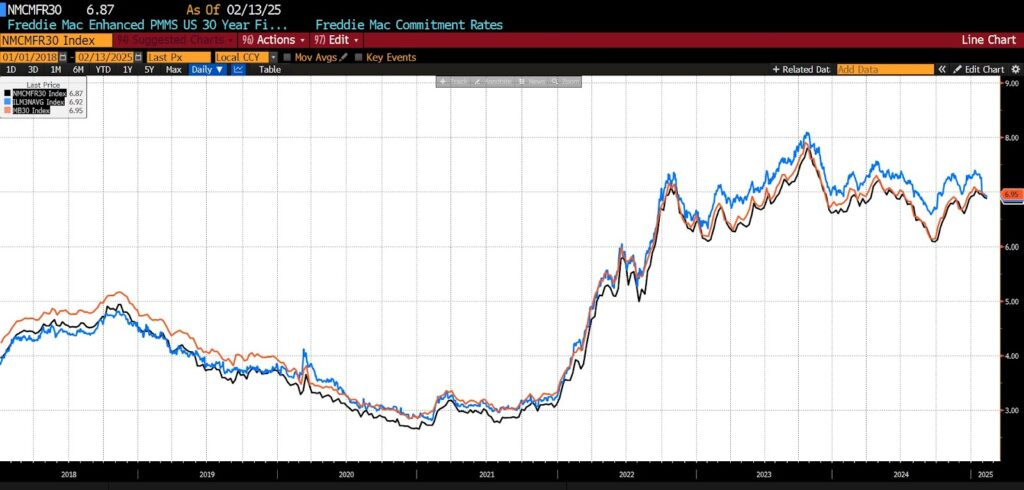Delistings and shadow inventory. Where do they take the housing market
3/6/2025
A New Look at the Surge in Home Delistings
 As reported in The Wall Street Journal, nearly 73,000 homes were pulled from the market in December 2024, a whopping 64 percent increase from the same month a year earlier. Despite an increase in available properties, the total number of home sales fell to its lowest level in nearly thirty years, suggesting that demand has suddenly dried up.
As reported in The Wall Street Journal, nearly 73,000 homes were pulled from the market in December 2024, a whopping 64 percent increase from the same month a year earlier. Despite an increase in available properties, the total number of home sales fell to its lowest level in nearly thirty years, suggesting that demand has suddenly dried up.
In today’s evolving housing market, a growing number of homeowners are choosing to remove their properties from the market — a trend that is shaking up the industry. Rather than accept offers that fall short of their expectations, many sellers are opting to pause and wait for more favorable conditions. This cautious approach, though partly seasonal, points to deeper issues in the way our housing market is currently functioning.
Why Are Sellers Taking Their Homes Off the Market?

- 30-year Fixed (black)
- 30-year Mortgage National Average (blue)
- MB30 Index (orange), 2018 – present
At the heart of this trend is a reluctance to lower asking prices. Many homeowners still benefit from ultra-low mortgage rates secured years ago. Faced with the prospect of taking a hit in today’s high-rate environment, they are unwilling to compromise on price. Instead, they’re choosing to withdraw their listings, betting that market conditions will eventually shift to better reflect the value they believe their properties deserve.
Economic Uncertainty and Market Dynamics
This wave of delistings is not simply a seasonal anomaly—it signals underlying market uncertainty. Homeowners are increasingly concerned that the prevailing economic conditions, including rising rates and mixed regional performances, do not justify a quick sale at a reduced price. This decision to wait is a defensive strategy; by stepping back from the market, sellers aim to avoid a potential race to the bottom that could depress home values further. In doing so, they contribute to what some analysts describe as a “shadow inventory”—a backlog of properties that, if relisted all at once, could overwhelm the market and drive prices down even more.
Regional Differences: A Tale of Two Markets
The impact of this phenomenon is not uniform across the country. In areas where inventory has been abundant for some time, the increased number of delistings may offer temporary relief by reducing competition among sellers. However, in markets that have traditionally experienced a shortage of homes, prices remain high, and the delisting trend adds an extra layer of uncertainty. In these regions, even with fewer homes on the market, the overall dynamics are shifting as sellers recalibrate their expectations in light of broader economic pressures.
Looking Ahead: What the Future May Hold
The current surge in delistings forces us to ask how long this trend will persist. If homeowners continue to withhold their properties, the market could be sitting on a reservoir of unlisted homes ready to flood back in once conditions change. While this might ultimately drive down prices, it also reflects a broader hesitation among sellers to engage in transactions that do not meet their financial targets. In a sense, the market is in a holding pattern, with participants waiting for clearer signals before making their next move.
Conclusion: A Moment of Pause and Reflection
Ultimately, the trend of pulling homes off the market is a mirror of the times. It highlights a period of recalibration where both buyers and sellers are grappling with uncertainty. For sellers, it’s a strategic decision to preserve value in a market where conditions are far from ideal. And for observers, it’s a reminder that the housing market—like many other sectors—must adapt to economic realities that are continually in flux.
The current wave of delistings, declining home sales, and rising unsold inventory are a warning sign that the US housing market is ailing and possibly bound for a sharp, perhaps sudden drop in prices.
By rethinking traditional strategies and waiting for the right moment, today’s homeowners are echoing a broader sentiment: in uncertain times, patience and careful planning are key to preserving long-term value.